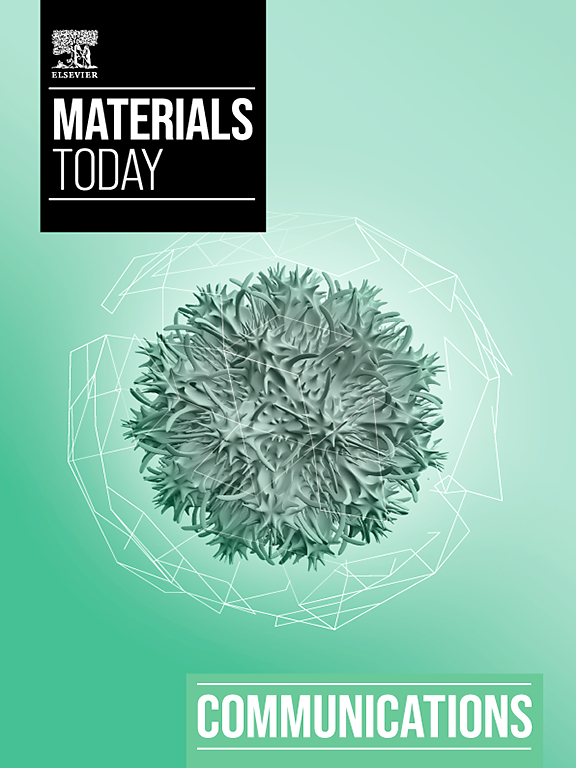Influence of Zr addition on the microstructure, mechanical and electrical properties of Mo-Cu alloy
IF 4.5
3区 材料科学
Q2 MATERIALS SCIENCE, MULTIDISCIPLINARY
引用次数: 0
Abstract
In order to strengthen the overall properties of Mo-Cu alloy, Zr was added to Mo-Cu alloy to enhance the bond strength of Mo/Cu interface and form solid solution strengthening effect. The excellent properties of Mo-Cu-Zr blocks were attained through infiltrating Cu-Zr blocks containing various Zr contents into the Mo skeleton. Compared to the incoherent interface of Mo/Cu in Mo-Cu block, the addition of Zr changed its interface to the coherent interface of Mo-Zr/Cu-Zr. All Mo-Cu-Zr alloy blocks possessed high densification degrees (97.1 %∼98.4 %) to assure the excellent general properties. Besides, the formations of Mo-Zr and Cu-Zr solid solutions assured the block owned excellent mechanical strength. Especially, the addition of Zr purified the grain boundary through absorbing oxygen to produce ZrO which prevented the Mo-Zr grain growth. As increasing Zr amount from 0 to 4.73 wt%, the Mo-Zr (or Mo) grain size reduced from 5 to 4.0 μm. Mo-Cu sintered sample containing 2.40 wt% Zr possessed the highest tension strength of 494 MPa. Besides, since the finer grain size of Mo-Zr alloy, this block also owned the highest micro-hardness (250 HV) and bending strength (1626 MPa), respectively. But, the generations of Cu-Zr solid-solution and ZrO also damaged the electrical conductivities to a certain extent. Specifically, as the addition amount of zirconium increased from 0 to 2.40 wt%, the conductivity decreased from 42.67 % to 32.15 %IACS.添加 Zr 对 Mo-Cu 合金微观结构、机械和电气性能的影响
为了增强 Mo-Cu 合金的整体性能,在 Mo-Cu 合金中加入了 Zr,以增强 Mo/Cu 界面的结合强度,形成固溶强化效应。通过在 Mo 骨架中渗入不同 Zr 含量的 Cu-Zr 块,Mo-Cu-Zr 块获得了优异的性能。与 Mo-Cu 块中不一致的 Mo/Cu 界面相比,Zr 的加入使其界面变成了 Mo-Zr/Cu-Zr 的一致界面。所有 Mo-Cu-Zr 合金块体都具有很高的致密性(97.1%∼98.4%),从而保证了其优异的综合性能。此外,Mo-Zr 和 Cu-Zr 固溶体的形成也确保了合金块具有优异的机械强度。特别是,Zr 的加入通过吸收氧气生成 ZrO 来净化晶界,从而阻止了 Mo-Zr 晶粒的生长。随着 Zr 含量从 0 wt% 增加到 4.73 wt%,Mo-Zr(或 Mo)晶粒尺寸从 5 μm 减小到 4.0 μm。含 2.40 wt% Zr 的 Mo-Cu 烧结样品具有最高的拉伸强度(494 兆帕)。此外,由于 Mo-Zr 合金的晶粒尺寸更细,因此该合金块的显微硬度(250 HV)和弯曲强度(1626 MPa)也分别最高。但是,Cu-Zr 固溶体和 ZrO 的生成也在一定程度上破坏了导电性。具体来说,随着锆的添加量从 0 wt% 增加到 2.40 wt%,导电率从 42.67 %IACS 下降到 32.15 %。
本文章由计算机程序翻译,如有差异,请以英文原文为准。
求助全文
约1分钟内获得全文
求助全文
来源期刊

Materials Today Communications
Materials Science-General Materials Science
CiteScore
5.20
自引率
5.30%
发文量
1783
审稿时长
51 days
期刊介绍:
Materials Today Communications is a primary research journal covering all areas of materials science. The journal offers the materials community an innovative, efficient and flexible route for the publication of original research which has not found the right home on first submission.
 求助内容:
求助内容: 应助结果提醒方式:
应助结果提醒方式:


